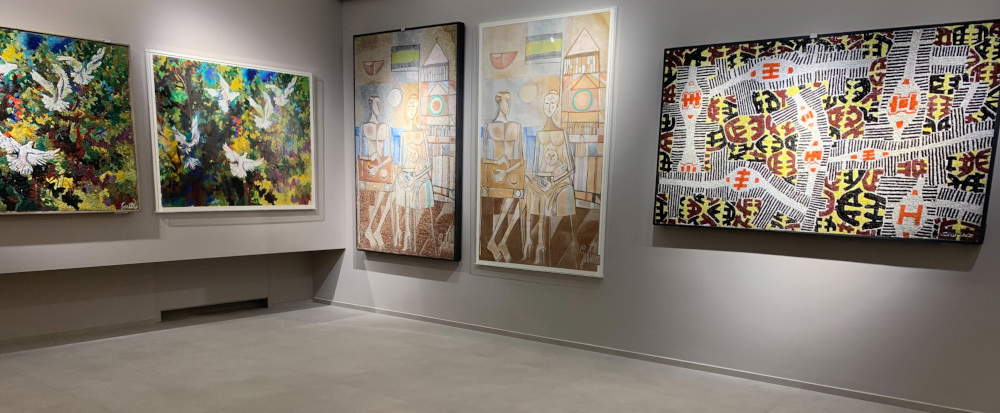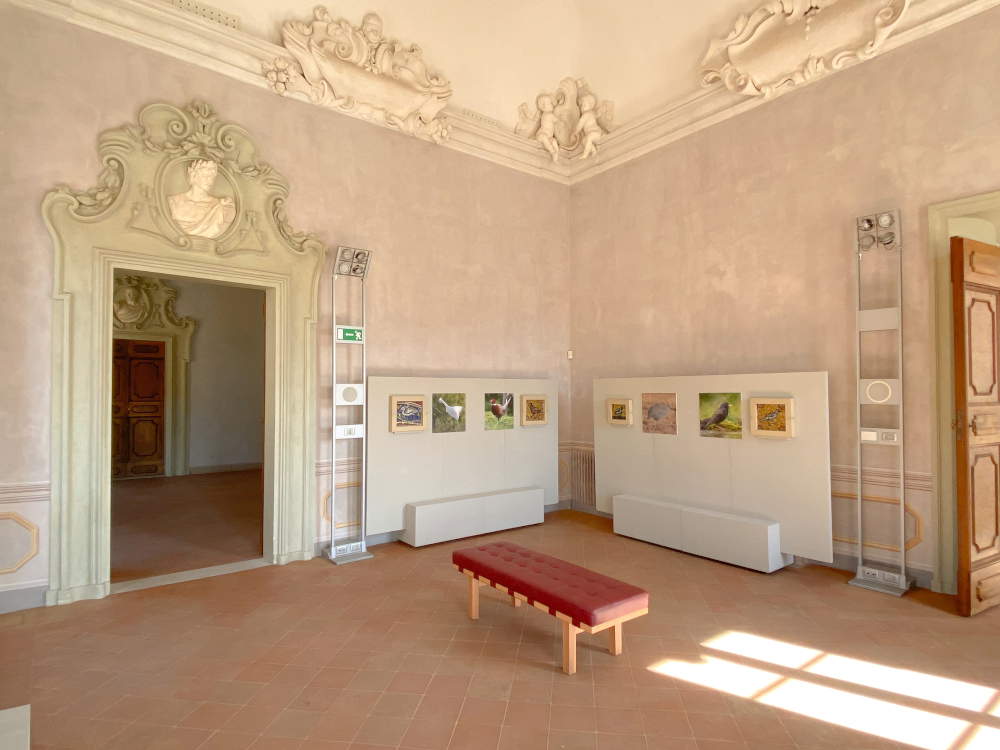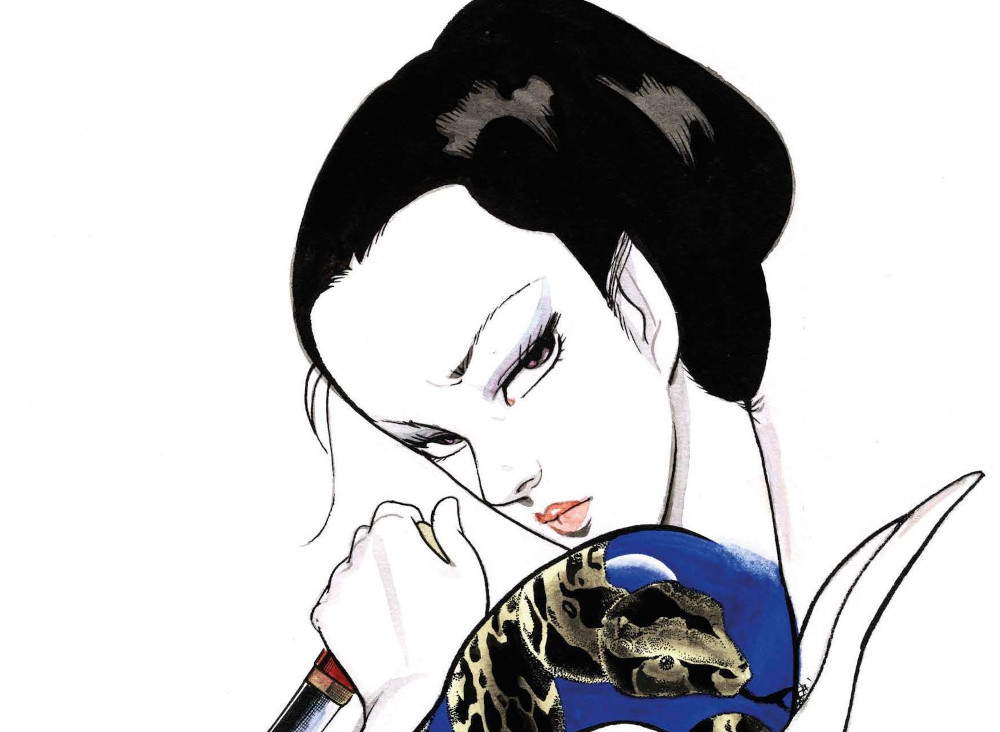From June 15 to July 30, 2023, Ravenna’s MAR hosts the great authors of contemporary comics: from Japanese manga master Kazuo Kamimura to Andrea Pazienza, Manuele Fior, Paolo Bacilieri, and Tuono Pettinato. And over the weekend of June 15-18, a rich program of meetings, events, live performances among graphic novels, art, music and cinema is planned. Despite the emergency after the flood that hit the city and the territory of Emilia Romagna, the Municipal Administration, the Art Museum and the publisher Coconino Press decided by mutual agreement not to give up the event. In order to give a concrete signal and a contribution to the reconstruction, Coconino Press has decided to donate the proceeds of the sales that will be made at the Love Comics exhibition bookshop during the days of the festival to encourage the restoration of cultural activities and give support to cultural producers in the area who have suffered damage due to the flood. In fact, the second edition of Coconino Fest, the festival of the Coconino Press publishing house that celebrates the ninth art of the graphic novel by linking it with other forms of expression and storytelling such as music, figurative arts, literature, cinema and performance and addressing all generations, with special attention to the youngest, is returning to Ravenna.
Again under the sign of Krazy Kat, George Herriman’s comic cat in love with and favorite victim of the mouse Ignatz, the protagonist of the poster designed by Antonio Pronostico that pays homage to comics and also to the city of Ravenna. There are many new features of this edition, starting with the venue: the MAR - Museo d’Arte della Città di Ravenna (Ravenna City Art Museum ) will host the festival, organized by Coconino in co-partnership with the Ravenna City Council’s Department of Culture and MAR itself. The museum will host under the collective title Love Comics five major exhibitions of original plates by some of the biggest names on the international comics scene-Andrea Pazienza and Japan’s Kazuo Kamimura, Manuele Fior and Paolo Bacilieri-and an exhibition paying tribute to Tuono Pettinato on the second anniversary of his death. A sixth group exhibition will focus on the works of young newcomers discovered and launched by Coconino Press: BeneDì (Benedetta D’Incau), Silvia Righetti and Rambo Pavone. After the opening on Thursday, June 15, the exhibitions will be open to the public until July 30 according to the following hours: Tuesday through Saturday from 9 a.m. to 6 p.m.; Sundays and holidays from 10 a.m. to 7 p.m.; closed Mondays). Alongside the exhibitions, over the weekend of June 15-18, the MAR and other spaces in Ravenna will host numerous events:
a special tribute to Andrea Pazienza on the 35th anniversary of his death with the reading Gli ultimi giorni di Pompeo by writer, singer and musician Emidio Clementi, leader of Massimo Volume (Friday, June 16);
a meeting - debate to remember Tuono Pettinato, the beloved cartoonist who died two years ago (Thursday, June 15);
various meetings with authors who will present their comic novels;
Krazy for Football. Real Zigan, the team of Roma boys created by Gipi’s initiative and coached by Enrico Zanchini, challenges the National Comics Team in a 5-a-side soccer match. At the opening Gipi and Davide Reviati talk with the athletes. (Saturday, June 17 Mattei Stadium, Anic Village, 4 Mattei St.);
the screening of the “Italian Gothic” film Pantafa (a Fandango-Rai Cinema production, directed by Emanuele Scaringi and starring Kasia Smutniak), which inspired the graphic novel Malanotte by Marco Taddei and La Came (Sunday, June 18). And like last year, there will be no shortage of an evening “Krazy Party” on the beach at Hana Bi in Marina di Ravenna, scheduled for Saturday, June 17, with comics, live music, DJ sets and live painting performances by Coconino Press house illustrators.
For more info visit http://www.mar.ra.it

At the MAR in Ravenna you can also see the new display of the Contemporary Mosaics collection. Set up in all the exhibition spaces on the ground floor of the museum, including the quadriporticus, the collection traces the development that mosaic technique has undergone from the experiences gained in Ravenna, nationally and internationally, from the second decade of the twentieth century to the present and includes more than ninety works. The rearrangement works were realized thanks to the valuable support of the Emilia-Romagna Region, of the Emilia-Romagna POR FESR Program 2014/2020 - Axis 6 - Actions 2.3.1. “Attractive and Participatory Cities.”
The exhibition itinerary is divided into three sections: Modern Mosaics Exhibition 1959, Mosaic & Design and Contemporary Declinations. The rearrangement project was created by the MACRO Macchine Narrative Studio of Lucca together with the MAR management and scientific committee, and was designed with the aim of offering the visitor a unique experience accompanied by multimedia videos to support the visit.
The itinerary opens with the works created on the occasion of the Exhibition of Modern Mosaics inaugurated in 1959, a pivotal moment in the renewal ofmosaic art. This section constitutes the core of the collection, upon which the entire collection was later developed. The project originated within the Gruppo Mosaicisti dell’Accademia di Ravenna and was later organized and promoted by Giuseppe Bovini, who intended to put mosaic technique at the service of contemporary art, and financed by the Rotary Club, the Ravenna Chamber of Commerce, the Azienda Autonoma di Soggiorno e Turismo, and the Ente Provinciale del Turismo. Some of the main protagonists of the art scene were invited to make preparatory sketches of works intended to be made in mosaic. For almost all of the works in this mosaic revival plan, the preparatory cartoon and mosaic work are present in the collection. The intent of the 1959 project was not to create an exhibition of mosaic paintings, but to demonstrate the relevance of mosaic by urging close collaboration among artists who could reintroduce the ancient distinction between pictores imaginarii, those who designed the drawing, and pictores musivarii, who instead had the task of executing it in mosaic. In addition to the application of mosaic in favor of modern artistic expressiveness, the exhibition was of fundamental importance for the evolution of the idea of mosaic itself, because it triggered phenomena and approaches aimed at emancipation from the “translation” into mosaic work of propaedeutic designs by considering mosaic as an autonomous work. The mosaics in this section are owned by the Province, the Chamber of Commerce and the Rotary Club, which loaned them to the MAR in 2007.
The second section of the exhibit proposes the theme of Mosaic & Design: the works exhibited at MAR were designed by Studio Alchimia of Milan (1976-1992), founded by siblings Adriana and Alessandro Guerriero, around which gravitates a group of designers, architects and artists who have made the history of Italian design. The current layout revives the artistic experience of Studio Alchimia, which emphasized a return to cultured and noble craftsmanship. The project was entrusted to the Ravenna Mosaicists Association, but the Cooperativa Mosaicisti di Ravenna and Studio Signorini also collaborated on the undertaking.
The exhibition continues with the last section, Contemporary Declinations, which documents how from the 1970s a new phase of research developed in which some mosaicists emancipated themselves definitively from the role of executors. The beating heart of this research is Ravenna itself. On the cultural roots of the splendors of the Capital of the Byzantine Empire is increasingly defined the need to want to trace a new path to experiment with new connections. Artists begin to create mosaic works without set patterns, overcoming the comparison with the past.
The mosaic is no longer made only with tiles, but is also composed through pictorial and sculptural techniques, with the use of original and heterogeneous materials. The collaborations with international artists such as Valerio Adami, Michelangelo Antonioni, Balthus, Giosetta Fioroni, Piero Gilardi, Luigi Ontani, and Mimmo Paladino, as well as the experiments of Ravenna mosaicists, are part of this perspective. The mosaic interpretations exhibited at MAR are the result of different cultural sedimentations, the mosaic frees itself from its more traditional characterization to fully interpret contemporaneity and narrates an evolution not only stylistic but also conceptual that cannot disregard the transformation of the role of the mosaicist-artist. The collection thus documents how the last decades have led mosaicists to increasingly design and create works of their own conception in order to directly confront the themes, tools, materials, and challenges of the present, free to follow styles and propose the most personal and diverse solutions, from figurative to Abstractionism, from Pop art to Arte Povera to the citationism inherent in Postmodernism.
Thanks to events and donations, the collection is enriched each year with numerous works that make this collection open to the most recent innovations, with an extraordinary overview of contemporary expressions from the 1950s to the present day. The display is also accompanied by video apparatuses that document how the city, over time, is embellished by many public works thatdecorate the urban fabric
In addition, the rearrangement is also an opportunity for an overall reading of the history of 20th-century Ravenna mosaics, so a path has been constructed that looks at the classical roots of contemporary mosaics and a dialogue between the ancient and the modern. Visitors to the MAR will have free access to the TAMO MOSAICO museum, inside the ancient church of San Nicolò in Ravenna, dedicated to the art of mosaic, which houses, in addition to valuable evidence of ancient and late antique mosaics, the Mosaics between Hell and Paradise section: twenty-one mosaic works on Dante’s theme created by great artists of the Italian twentieth century, a collection that stands in continuity with the heritage on display in the new mosaic section of the MAR. An important new feature also concerns the under-26 public, who will be able to visit the MAR free of charge every Wednesday.
Hours: Tuesday through Saturday from 9 a.m. to 6 p.m.; Sundays and holidays from 2 to 6 p.m.
Tickets: Full 6 euros, reduced 5 euros.

To conclude, until June 18, 2023, the halls of Palazzo Rasponi dalle Teste in Ravenna are hosting The Heritage of Biodiversity - Mosaic and Nature, an event dedicated to the relationship between art and territory in Ravenna since the times when the city was the capital of the ancient world.
The exhibition, organized by the Tourism Service of the Municipality of Ravenna and the Po Delta Park, aims to tell the story of the relationship between the representations of the ancient mosaics of Ravenna and the fauna of the Po Delta Park through a mosaic and photographic journey. Ravenna is known as the Mosaic Capital, but it is also a destination of naturalistic interest. It is a well-known destination for birdwatchers, as there are more than three hundred species of birds reported, whose presence in ancient times certainly also influenced the mosaic decorations of the UNESCO World Heritage monuments.
The exhibition, curated by Giacomo Costantini (Ravenna Municipality’s Tourism Councillor), Maria Grazia Marini (manager of the Tourism Service of the Municipality of Ravenna), Aida Morelli (president of the Delta Park) and Massimiliano Costa (director of the Delta Park), features details of the mosaic representations of the copies of the mosaics made by the Ravenna Mosaicists Group in the early 1950s of the Unesco monuments and shots by Maurizio Bonora, Massimiliano Costa, Nicola Merloni, Luciano Piazza and Roberto Zaffi. The exhibition is accompanied by texts inspired by the studies of the Ravenna Mosaicists Group, Don Giovanni Montanari (1929 - 2021) director of the Archbishop’s Library and Archives, Isotta Fiorentini Roncuzzi (1925 - 2016) a passionate scholar and teacher, author of many texts on mosaic, its history and technique, founder of the International Association of Contemporary Mosaicists and promoter of the Peace Park; and Azelio Ortali (1925) a naturalist, photographer and writer, former director of the Ornithological and Natural Science Museum. A video curated by Andrea Bernabini and Matteo Bevilacqua entitled Weaves and Details will be on view to accompany the exhibition itinerary.
Hours: Tuesday through Friday from 3:30 to 7:30 p.m.; Saturday, Sunday and holidays from 10:30 a.m. to 7:30 p.m. Free admission.

 |
| At the MAR in Ravenna the great authors of contemporary comics. And contemporary mosaics rearranged |
Warning: the translation into English of the original Italian article was created using automatic tools. We undertake to review all articles, but we do not guarantee the total absence of inaccuracies in the translation due to the program. You can find the original by clicking on the ITA button. If you find any mistake,please contact us.